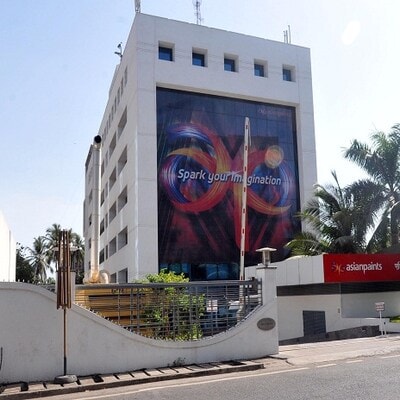In a move likely to boost employee morale ahead of its initial public offering (IPO), food and grocery delivery giant Swiggy announced its largest-ever Employee Stock Ownership Plan (ESOP) liquidity program on Monday. The program allows employees to sell a portion of their company stock options for a combined total of up to $65 million.
This programme allows Swiggy employees to sell some of their company shares for a total of up to $65 million.
Who Can Participate: Employees across all levels and departments in Swiggy are eligible. Over 3,200 employees across all levels and departments will be eligible to participate, with the company facilitating over Rs 1,000 crore worth of liquidity for employees through these programs to date. This is the fifth time Swiggy has offered such a programme to employees. It’s happening before the company goes public through an IPO. So far, the company has cumulatively enabled over Rs 1,000 crore of ESOP liquidity over the five events.
Who is buying shares?
Other investors interested in owning a piece of Swiggy will purchase the shares being sold by employees.
Company Valuation: Industry sources say the company is valued at $9.3 billion in these secondary transactions (selling shares to employees before IPO).
Who else is selling: Swiggy’s co-founders and some other employees are also likely selling a portion of their shares through this programme.
“Rewarding employees by unlocking wealth-creation opportunities as Swiggy grows has always been a key priority for us,” said Girish Menon, head of human resources at Swiggy. “Employees owning shares of their company creates alignment of incentives and a sharp focus on collaborative excellence, which is a virtuous cycle that we believe in and espouse. As we approach the milestone of a decade of consumer love for Swiggy, the latest ESOP event is an acknowledgment of our employees’ contributions, and our commitment to sharing Swiggy’s success and growth with them.”
Business Standard decodes this ESOP programme for you:
What is the ESOP liquidity programme?
The Employee Stock Ownership Plan (ESOP) liquidity program allows employees to convert their shares into cash, essentially monetizing their ownership stakes. This program is undertaken by the company to acknowledge and reward employees’ contributions to the company’s success, fostering a sense of ownership and long-term commitment.
“By offering a financial incentive, companies aim to retain talent and motivate employees to work towards shared goals. These programs are typically implemented before a company goes public, as post-IPO regulations (Regulation 37 of the SEBI ICDR Regulations) impose a lock-in period of one year on pre-issue capital. While, an exemption exists for current employees who have been allotted shares under the ESOP, however, this does not extend to former employees.
For instance, Swiggy recently announced a $65 million ESOP liquidity program ahead of its IPO. Similarly, in 2020, Ola, India’s leading ride-hailing company, launched a $150 million ESOP liquidity program, allowing eligible employees to sell a portion of their vested stock options before its planned IPO,” said Keshav Singhania, Private Client Leader, Singhania & Co.
How will it benefit employees?
An ESOP liquidity program benefits employees by providing a financial gain through monetizing their vested shares or stock options, offering liquidity to otherwise illiquid assets, recognizing and rewarding their contributions, motivating them to stay with the organization long-term, giving them a sense of ownership and participation, offering tax benefits, allowing diversification of investments, and promoting transparency. “By offering such a program, companies demonstrate their commitment to employee welfare and motivation, fostering a positive work environment and encouraging talent retention and enabling wealth-creation for employees,” added Singhania.
Taxation challenges for ESOPs:
When are ESOPs Taxed?
Employees get taxed on ESOPs twice under the current system.
First Time: Exercising the Option (Perquisite)
This happens when the employee decides to convert their ESOPs into actual company shares.
-
The tax is based on the difference between the fair market value (actual market price) of the share and the exercise price (discounted price the employee pays). -
This difference is considered a taxable benefit (perquisite) the employee receives as part of their salary.
Example:
A company offers 100 shares with a market value of Rs 100 each to an employee at an exercise price of Rs 75 per share.
When the employee exercises the option, they get taxed on the difference of Rs 25 per share (100 – 75) for all 100 shares. This translates to a tax on Rs 2,500 (100 shares * ₹25 difference).
” Since the ESOPs are offered at a discounted rate from its fair market value, referred to as exercise price, they are taxable on the difference between the fair market value and the exercise price of these shares. As soon as the employee exercises the ESOPs through trigger option, the shares become taxable at the hands of the employee,” said Singhania.
Second Time: Selling the Shares (Capital Gains)
-
This is similar to how any shareholder pays capital gains tax when they sell their shares. -
The tax depends on how long the employee holds the shares (holding period) and the difference between the selling price and the fair market value at the time of exercise (purchase). -
Long-term capital gains (held for over 1 year) are taxed at a lower rate compared to short-term capital gains (held for less than a year).
Tax Benefits of the Programme:
This program might offer some tax-saving opportunities for employees:
-
Offset long-term capital gains from selling ESOP shares with long-term capital losses from other investments, potentially reducing the overall tax burden. -
Claim a tax deduction under a specific section of the Income Tax Act (Section 80C) for the amount invested in ESOP shares, subject to a yearly limit.
How ESOPs Typically Work:
ESOP grants are usually divided into vesting periods. For example, if an employee gets 100 ESOPs, they might only be able to access 25 shares each year for the next four years.
Once a vesting period ends, the employee has the option to exercise their options, meaning they can convert those shares into actual company stock.
The exercise price is typically set lower than the actual market price of the company’s shares. This gives employees a potential benefit when they eventually sell the shares.
While Swiggy’s ESOP programme offers liquidity and potential benefits, employees still face tax challenges due to the way ESOPs are taxed in India. The program tries to mitigate this by potentially allowing some tax-saving strategies.
” This program benefits employees from a tax perspective by allowing them to offset long-term capital gains from ESOP shares against long-term capital losses, taxed at a lower rate of 10% (plus surcharge and cess), and exempt from tax under Section 10(38) if held for over 12 months. Additionally, employees can claim a tax deduction under Section 80C for the amount invested in ESOP shares, subject to the overall limit of INR 1.5 lakh. This enables tax-efficient planning, minimizing tax implications, and reducing tax liability, making the program a valuable benefit for employees,” said Singhania.
First Published: Jul 16 2024 | 8:35 AM IST







